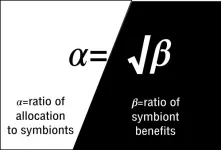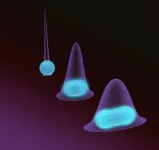New imaging technique may boost research in biology, neuroscience
Scientists hope it will allow them to see inner workings of systems
2021-07-07
(Press-News.org) Microscopists have long sought to find a way to produce high-quality, deep-tissue imaging of living subjects in a timely fashion. Until now, they had to choose between image quality or speed when it comes to looking into the inner workings of complex biological systems.
Such a development would have a powerful impact on researchers in biology and in neuroscience, experts say. Now Dushan N. Wadduwage, a John Harvard Distinguished Science Fellow in Imaging at the FAS Center of Advanced Imaging, along with a team from MIT, detailed a new technique that would make that possible in a report in Science Advances.
In the paper, the team presents a new process that uses computational imaging to get high resolution images at a rate 100 to 1,000 times faster than other state-of-the-art technologies that use complex algorithms and machine learning. The method can turn a process that takes months into a matter of days.
The system, called De-scattering with Excitation Patterning (or DEEP), is believed to be the first of its kind and may one day lead to new understandings of how complicated tissue specimens, like the brain, functions because it can take images that aren't possible with other microscopes.
"Because this has the potential to actually speed up [what you can take an image of along with how fast you can do it], scientists will be able to image fast processes they haven't been able to capture before, like what happens when a neuron fires or how the signals move around in the brain," Wadduwage said. "Also, because it's technically faster, you can image a larger volume of area at one time, not just a small field of view as you would with a slower imaging system. It's like being able to look at a much larger picture, and this is very important for neuroscientists and other biologists to actually get better statistics as well as to see what's happening around the area being imaged."
The system works like many other animal imaging techniques. Near-infrared laser light is used to penetrate deep through biological tissue that scatters the light. That light excites the fluorescent molecules the researchers want to image and emit signals that the microscope captures to form an image.
There have been two main ways these types of images are taken. Point-scanning multiphoton microscopy can penetrate deep into a specimen and capture high quality images. The drawback is the process is extremely slow because the image is formed one point at a time. If the researcher is looking to capture a centimeter-sized image, for example, it can take months. It also limits studies of fast biological dynamics, such as neurons firing. The other method is call temporal focusing microscopy, which is much faster and can capture images at a wider scale but is unable to capture high resolution images at anything deeper than few millionths of a meter. The fluorescent light scatters too much, causing the image to degrade when the camera detects it.
DEEP, however, allows for fast tissue penetration at a wide scale and produces high-resolution images. The system projects a wide light into the subject as in the temporal microscopy method, but that laser light is in a specific pattern. The computational imaging algorithm knowing the initial pattern takes in the information gathered to reverse the process when it gets scattered and then reconstructs it, descattering the image. This is especially notable since it takes the reconstruction of structural features from millions of measurements to tens and hundreds. DEEP can image hundreds of microns deep through scattering tissue comparable to point-scanning techniques.
DEEP is still early years of development but is emerging from its proof-of-concept phase.
"We showed that we can image about 300 microns into the brains of live mice," Wadduwag said. "But since this is only the first demonstration, almost all aspects of the technique have room for improvement."
INFORMATION:
ELSE PRESS RELEASES FROM THIS DATE:
2021-07-07
Increased acidity in the atmosphere is disrupting the ecological balance of the oceans, according to new research led by the University of East Anglia (UEA).
The first study to look at acidity's impact on nutrient transport to the ocean demonstrates that the way nutrients are delivered affects the productivity of the ocean and its ability to absorb CO2 from the atmosphere.
The research, 'Changing atmospheric acidity as a modulator of nutrient deposition and ocean biogeochemistry', is published today in Science Advances. The analysis was carried out by an international team of experts, sponsored by the United Nations Group of Experts on the Scientific Aspects of Marine Environmental Protection (GESAMP).
Prof Alex Baker, professor of marine and atmospheric chemistry ...
2021-07-07
To create high-resolution, 3D images of tissues such as the brain, researchers often use two-photon microscopy, which involves aiming a high-intensity laser at the specimen to induce fluorescence excitation. However, scanning deep within the brain can be difficult because light scatters off of tissues as it goes deeper, making images blurry.
Two-photon imaging is also time-consuming, as it usually requires scanning individual pixels one at a time. A team of MIT and Harvard University researchers has now developed a modified version of two-photon imaging that can image deeper within tissue and perform the imaging much more quickly than what was previously possible.
This kind of imaging could allow scientists to more rapidly obtain ...
2021-07-07
Metastatic tumors originating from notoriously aggressive triple-negative breast cancer that emerge in the lungs contain a more diverse array of cancer cells than those that arise in the liver, according to a new study in mice and organs from deceased cancer patients. The study also identified a set of genes that distinguish lung and liver metastases; together, the findings may inform future research on how targeted therapies impact tumors across various microenvironments. While scientists have known that the presence of distinct tumor cell populations within the same tumor drives breast cancer progression, it has not been fully understood why this dangerous cellular diversity develops within some tumors and not others. To investigate ...
2021-07-07
From above, the Antarctic Ice Sheet might look like a calm, perpetual ice blanket that has covered Antarctica for millions of years. But the ice sheet can be thousands of meters deep at its thickest, and it hides hundreds of meltwater lakes where its base meets the continent's bedrock. Deep below the surface, some of these lakes fill and drain continuously through a system of waterways that eventually drain into the ocean.
Now, with the most advanced Earth-observing laser instrument NASA has ever flown in space, scientists have improved their maps of these hidden lake systems under the West Antarctic ice sheet--and ...
2021-07-07
"Equal pay for equal work," a motto touted by many people, turns out to be relevant to the plant world as well. According to new research by Stanford University ecologists, plants allocate resources to their microbial partners in proportion to how much they benefit from that partnership.
"The vast majority of plants rely on microbes to provide them with the nutrients they need to grow and reproduce," explained Brian Steidinger, a former postdoctoral researcher in the lab of Stanford ecologist, Kabir Peay. "The problem is that these microbes differ in how well they do the job. We wanted to see how the plants reward their microbial employees."
In a new study, published July 6 in the journal American Naturalist, the researchers investigated ...
2021-07-07
Very recently, researchers led by Markus Aspelmeyer at the University of Vienna and Lukas Novotny at ETH Zurich cooled a glass nanoparticle into the quantum regime for the first time. To do this, the particle is deprived of its kinetic energy with the help of lasers. What remains are movements, so-called quantum fluctuations, which no longer follow the laws of classical physics but those of quantum physics. The glass sphere with which this has been achieved is significantly smaller than a grain of sand, but still consists of several hundred million atoms. In contrast to ...
2021-07-07
DURHAM, N.C. -- You dash into a convenience store for a quick snack, spot an apple and reach for a candy bar instead. Poor self-control may not be the only factor behind your choice, new research suggests. That's because our brains process taste information first, before factoring in health information, according to new research from Duke University.
"We spend billions of dollars every year on diet products, yet most people fail when they attempt to diet," said study co-author Scott Huettel, a professor of psychology and neuroscience at Duke. "Taste seems to have an advantage that sets us up for failure."
"For many individuals, health information enters the decision process ...
2021-07-07
Injecting sulphur into the stratosphere to reduce solar radiation and stop the Greenland ice cap from melting. An interesting scenario, but not without risks. Climatologists from the University of Liège have looked into the matter and have tested one of the scenarios put forward using the MAR climate model developed at the University of Liège. The results are mixed and have been published in the journal The Cryosphere.
The Greenland ice sheet will lose mass at an accelerated rate throughout the 21st century, with a direct link between anthropogenic greenhouse gas emissions and the extent of Greenland's mass loss. To combat this phenomenon, and therefore global warming, it is essential to reduce ...
2021-07-07
ITHACA, N.Y. - An interdisciplinary team of Cornell and Harvard University researchers developed a machine learning tool to parse quantum matter and make crucial distinctions in the data, an approach that will help scientists unravel the most confounding phenomena in the subatomic realm.
The Cornell-led project's paper, "Correlator Convolutional Neural Networks as an Interpretable Architecture for Image-like Quantum Matter Data," published June 23 in Nature Communications. The lead author is doctoral student Cole Miles.
The Cornell team was led by Eun-Ah Kim, professor of physics in the College of Arts and Sciences, who partnered with Kilian Weinberger, associate professor of computing and information science in the Cornell Ann S. ...
2021-07-07
When you insist you're not racist, you may unwittingly be sending the opposite message.
That's the conclusion of a new study* by three Berkeley Haas researchers who conducted experiments with white participants claiming to hold egalitarian views. After asking them to write statements explaining why they weren't prejudiced against Black people, they found that other white people could nevertheless gauge the writers' underlying prejudice.
"Americans almost universally espouse egalitarianism and wish to see themselves as non-biased, yet racial prejudice persists," says Berkeley ...
LAST 30 PRESS RELEASES:
[Press-News.org] New imaging technique may boost research in biology, neuroscience
Scientists hope it will allow them to see inner workings of systems


